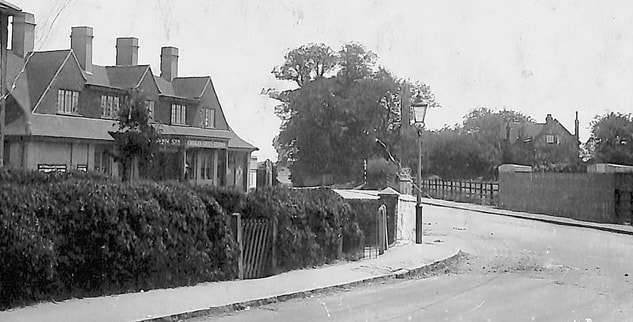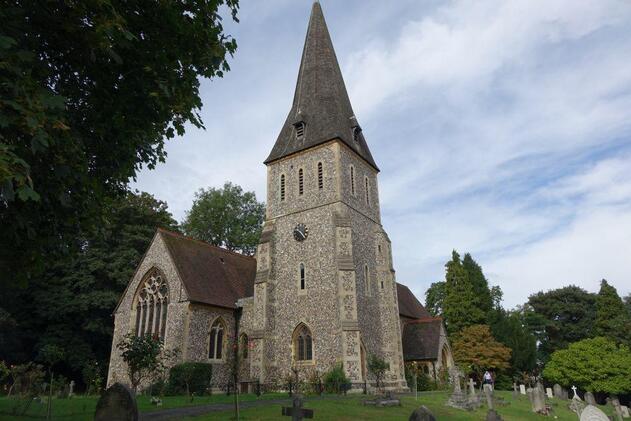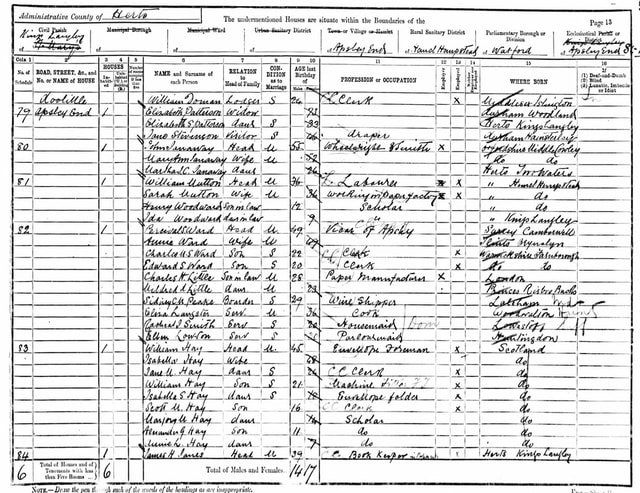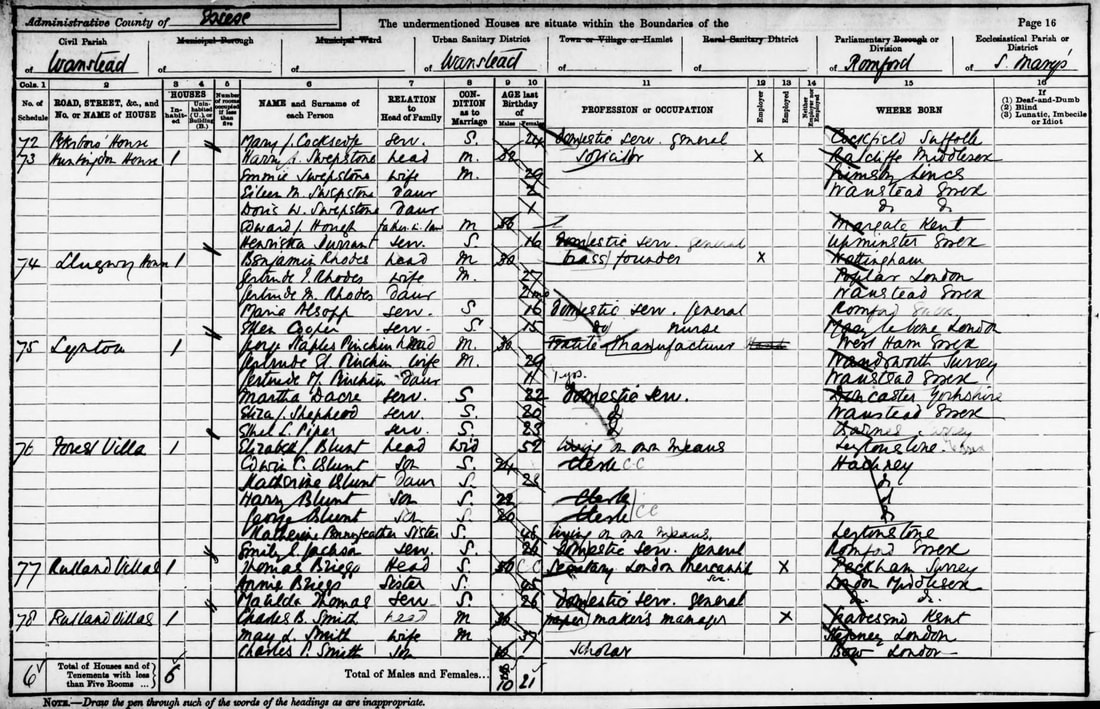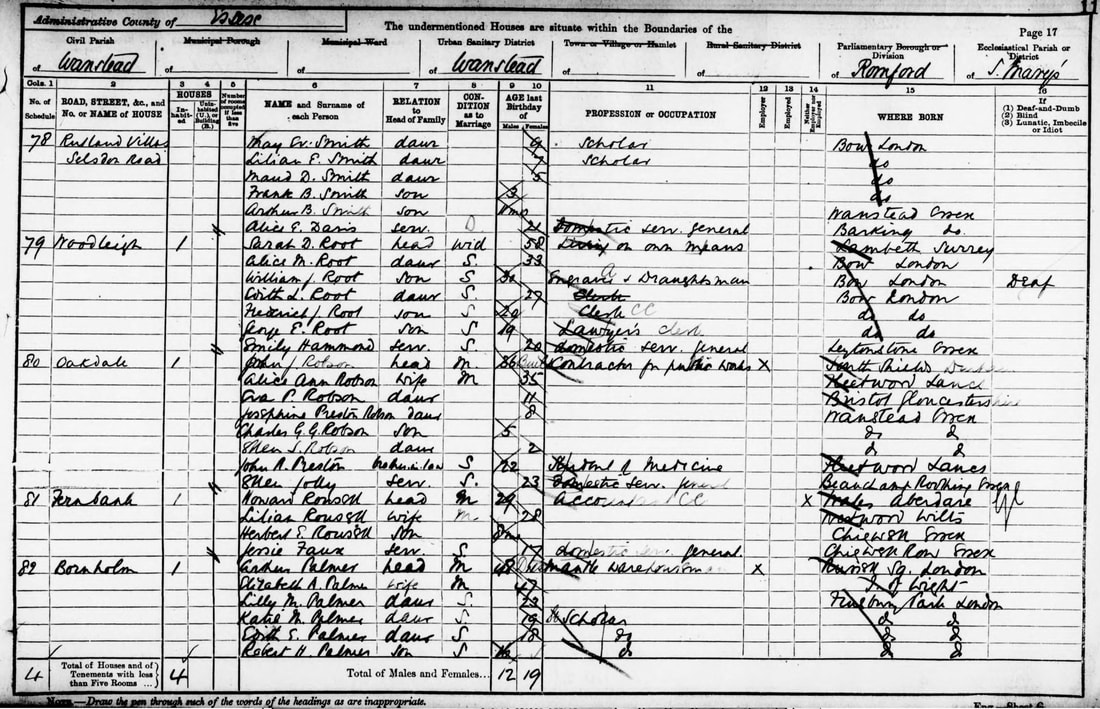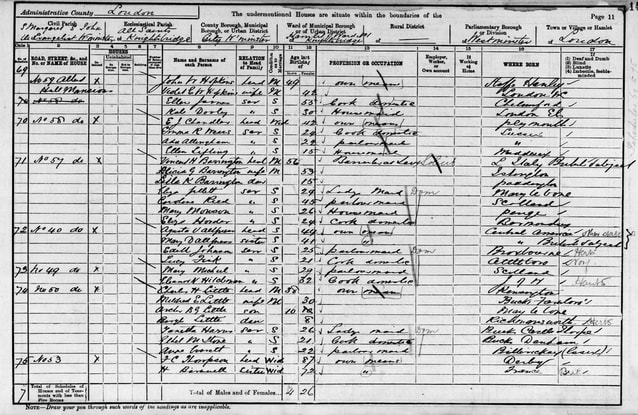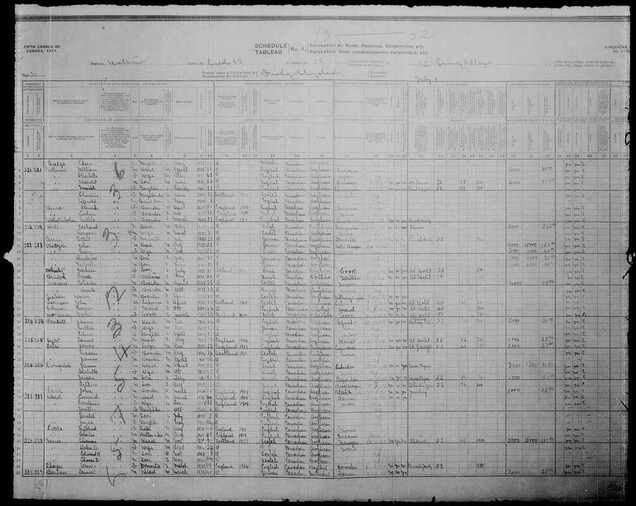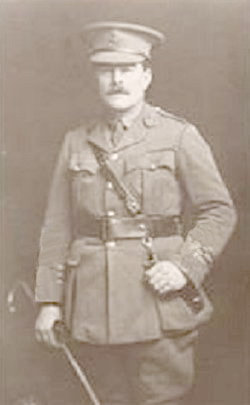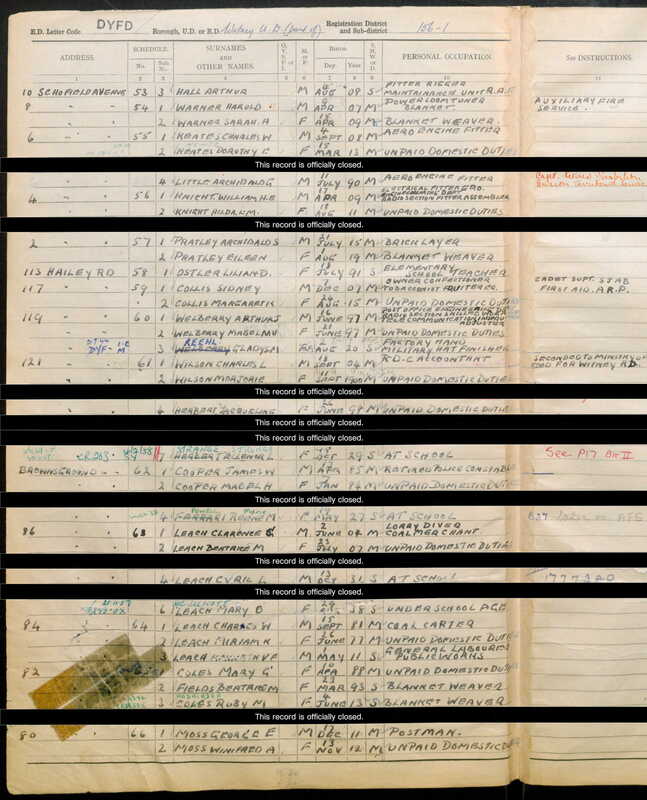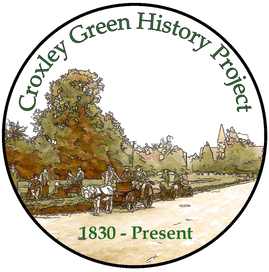Charles Hope Little
Manager of Dickinson's Paper Mill
Manager of Dickinson's Paper Mill
Charles Hope Little was born on 17th September 1862 into a wealthy, prosperous, propertied family who lived at 47, Queens Gate Terrace, Kensington, London. His father was Colonel Archibald Little (c1811-1891) and his mother Jane (nee Orme c1829- 1868). Archibald and Jane also owned a large country home, Whitewaysend, in Seale, Surrey. They were married on the 7th June 1854, and during their short marriage they had ten children, Archibald Cosmos c1856, Florence c1857, Malcolm (Robert) Orme c1858, Alexander c1859, Lockhart c1861, Charles Hope c1862, Archibald Oliver c1863, Violet Edith c1865, Agnes Mary c1867 and Jane Orme 1868. Running this large household required many servants and they employed at least twelve including a governess for the children.
Archibald’s wife Jane died in 1868 aged 38, at Rathdown, Co. Dublin, Ireland where she had given birth to her last child Jane Orme. Having had ten pregnancies in less than fourteen years of marriage, it is quite possible her death could have been associated with this.
Within two years Archibald married Elizabeth Sheldon, on the 7th of April 1870, at Holy Trinity Church, Westcott near Dorking, Surrey. Elizabeth, the widow of Captain E.R.C. Sheldon, was the daughter of General F. B. Loftus of Kilbride, Co. Wicklow, Ireland. (It was not uncommon at the time when young children lost a parent for the remaining parent, especially a husband, to remarry very quickly.) Archibald’s career in the army was very successful and he was promoted to Major General K.C.B as shown in the 1871 census.
The family were living at Upton House, Tetbury, Gloucestershire, an area now referred to as the Cotswolds. Archibald eventually retired from the army as Lieutenant General, Sir Archibald Little, and died on the 10th June 1891 age 80 years at Upton House, just 3 years after Elizabeth his second wife had died in 1888.
As with many families having a father in an army career, it was not unusual for at least one or more of the sons also to join the military. Malcolm Orme and Charles Hope joined the army and Archibald Cosmos chose the navy.
Charles Hope joined the army in 1880 but resigned his commission on the 9th May 1883. His brother Malcolm Orme, stayed on to become a Brigadier General and served in WW1.
Following the decision to abandon his army career, it is uncertain how Charles came to join the John Dickinson firm. It is possible that Charles’ mother Jane Orme, was connected to the publishing firm of Orme, and through this he may have come into contact with the Dickinson family. Joan Evans, grand daughter of John Dickinson, and author of The Endless Web, writes about the early history of the business. She describes how John Dickinson’s daughter Fanny would often entertain useful influential guests in her grand home in Rutland Gate. They would include her aristocratic friends as well as publishers such as Longman’s, Orme’s, and Rees that she considered would help develop the family paper making business.
This was a time when the business was experiencing a huge commercial expansion at home as well as overseas and this growth also involved the Croxley Mill, and nearly 500 additional workers were taken on to meet the demand.
The influx of workers from all over the country required homes in Croxley Green and this led to John Dickinson purchasing land from Gonville and Caius College, Cambridge, in 1886, and twenty seven cottages were built for the employees, and four semi- detached houses for the Mill Manager and office staff. They were locally known as Milestone Field cottages and the development was given the name, The Mill Square. The name changed to Dickinson Square when more mill houses were built in Dickinson Avenue. Many were completed by 1887 and Charles is known to have lived in the first of the two semi-detached houses with his family and servants.
However, soon after the Milestone Field cottages were complete, a more substantial detached house was being planned specifically for the Mill Manager in the village. This was on undeveloped land called Nuttfield, named because of the large number of nut trees growing in the area. It could be accessed to and from the Mill via the Watford Road by a short lane known as Mill Lane.
On 29th September 1890 four acres of land were leased from Caius College, on a 99 year lease and a yearly rent of £35 to John Dickinson Company. In 1891an impressive three-storey house was completed at a cost of £1,358. The accommodation consisted of a drawing room, a dining room, seven bedrooms, two dressing rooms, a bathroom, a kitchen, a scullery, two pantries, a larder and a cellar. The grounds provided a garage for two cars and rooms for a chauffeur. Stabling was also available. The garden had a large orchard of fruit trees and cob nuts as well as a sizeable kitchen garden for vegetables. Four years later electricity was installed (taken from the Mill) at a cost of £150. Nuttfield House was the first home in Croxley Green to receive electricity that was supplied from the Mill.
Archibald’s wife Jane died in 1868 aged 38, at Rathdown, Co. Dublin, Ireland where she had given birth to her last child Jane Orme. Having had ten pregnancies in less than fourteen years of marriage, it is quite possible her death could have been associated with this.
Within two years Archibald married Elizabeth Sheldon, on the 7th of April 1870, at Holy Trinity Church, Westcott near Dorking, Surrey. Elizabeth, the widow of Captain E.R.C. Sheldon, was the daughter of General F. B. Loftus of Kilbride, Co. Wicklow, Ireland. (It was not uncommon at the time when young children lost a parent for the remaining parent, especially a husband, to remarry very quickly.) Archibald’s career in the army was very successful and he was promoted to Major General K.C.B as shown in the 1871 census.
The family were living at Upton House, Tetbury, Gloucestershire, an area now referred to as the Cotswolds. Archibald eventually retired from the army as Lieutenant General, Sir Archibald Little, and died on the 10th June 1891 age 80 years at Upton House, just 3 years after Elizabeth his second wife had died in 1888.
As with many families having a father in an army career, it was not unusual for at least one or more of the sons also to join the military. Malcolm Orme and Charles Hope joined the army and Archibald Cosmos chose the navy.
Charles Hope joined the army in 1880 but resigned his commission on the 9th May 1883. His brother Malcolm Orme, stayed on to become a Brigadier General and served in WW1.
Following the decision to abandon his army career, it is uncertain how Charles came to join the John Dickinson firm. It is possible that Charles’ mother Jane Orme, was connected to the publishing firm of Orme, and through this he may have come into contact with the Dickinson family. Joan Evans, grand daughter of John Dickinson, and author of The Endless Web, writes about the early history of the business. She describes how John Dickinson’s daughter Fanny would often entertain useful influential guests in her grand home in Rutland Gate. They would include her aristocratic friends as well as publishers such as Longman’s, Orme’s, and Rees that she considered would help develop the family paper making business.
This was a time when the business was experiencing a huge commercial expansion at home as well as overseas and this growth also involved the Croxley Mill, and nearly 500 additional workers were taken on to meet the demand.
The influx of workers from all over the country required homes in Croxley Green and this led to John Dickinson purchasing land from Gonville and Caius College, Cambridge, in 1886, and twenty seven cottages were built for the employees, and four semi- detached houses for the Mill Manager and office staff. They were locally known as Milestone Field cottages and the development was given the name, The Mill Square. The name changed to Dickinson Square when more mill houses were built in Dickinson Avenue. Many were completed by 1887 and Charles is known to have lived in the first of the two semi-detached houses with his family and servants.
However, soon after the Milestone Field cottages were complete, a more substantial detached house was being planned specifically for the Mill Manager in the village. This was on undeveloped land called Nuttfield, named because of the large number of nut trees growing in the area. It could be accessed to and from the Mill via the Watford Road by a short lane known as Mill Lane.
On 29th September 1890 four acres of land were leased from Caius College, on a 99 year lease and a yearly rent of £35 to John Dickinson Company. In 1891an impressive three-storey house was completed at a cost of £1,358. The accommodation consisted of a drawing room, a dining room, seven bedrooms, two dressing rooms, a bathroom, a kitchen, a scullery, two pantries, a larder and a cellar. The grounds provided a garage for two cars and rooms for a chauffeur. Stabling was also available. The garden had a large orchard of fruit trees and cob nuts as well as a sizeable kitchen garden for vegetables. Four years later electricity was installed (taken from the Mill) at a cost of £150. Nuttfield House was the first home in Croxley Green to receive electricity that was supplied from the Mill.
It seems almost certain that the house was intended for Charles and Mildred Little and their family, as Charles was definitely the Manager at the time. They are listed in successive copies of the Kelly’s Directories living at this address. The following year on 30th May 1892 their daughter Beryl was baptised at All Saints church by Mildred’s father Rev Percival Seth Ward.
The extent of the Mill’s expansion was recalled in a booklet by Fred Heckford, a past employee and prominent chemist for many years, who writes in ‘From Memoirs of a Native’,
“In 1887-88 Croxley Mill was the most comprehensive self-contained pulp-papermaking
mill in the world, with gelatine, caustic soda making, soda reclamation, water filtration,
softening, purification plants, maintenance shops, Laboratories, two artesian wells, and in
advance of cities and towns- lit throughout by electricity.”
Fred Heckford also states in his memoirs that Charles Hope Little became Mill Manager in 1886.
https://www.croxleygreenhistory.co.uk/fred-heckford.html
However, there are conflicting dates for when Charles first was given this position. Joan Evans writes that in the Spring of 1889 things at the Croxley Mill were unsatisfactory, thanks to considerable mismanagement. It was the shareholders’ wish that a strong manager should be appointed. In June the Board decided against outside help but the following month Charles Hope Little was appointed as Mill Manager as well as James Coutts of Aberdeen, the Mill cashier.
Charles, now 27 years old, married Mildred Dora Ward, aged 21, on the 30th May 1889 at St. Mary’s parish church Apsley End, near Hemel Hempstead. Although Mildred’s father, the Rev. Percival Ward, was the vicar of this church, the service was conducted by the Rev. George Finch vicar of Leverstock Green. The witnesses to the marriage, described as ‘a fashionable event’ as reported in The Herts Advertiser, and St Albans Times, included Malcolm Orme Little, older brother of Charles, and Lewis Evans, a family member of the Dickinson family, who played a prominent part in the running of the business. He was also a Church Warden at St Mary’s. The marriage record confirms that Charles was living in Croxley Green and was a Mill Manager.
The extent of the Mill’s expansion was recalled in a booklet by Fred Heckford, a past employee and prominent chemist for many years, who writes in ‘From Memoirs of a Native’,
“In 1887-88 Croxley Mill was the most comprehensive self-contained pulp-papermaking
mill in the world, with gelatine, caustic soda making, soda reclamation, water filtration,
softening, purification plants, maintenance shops, Laboratories, two artesian wells, and in
advance of cities and towns- lit throughout by electricity.”
Fred Heckford also states in his memoirs that Charles Hope Little became Mill Manager in 1886.
https://www.croxleygreenhistory.co.uk/fred-heckford.html
However, there are conflicting dates for when Charles first was given this position. Joan Evans writes that in the Spring of 1889 things at the Croxley Mill were unsatisfactory, thanks to considerable mismanagement. It was the shareholders’ wish that a strong manager should be appointed. In June the Board decided against outside help but the following month Charles Hope Little was appointed as Mill Manager as well as James Coutts of Aberdeen, the Mill cashier.
Charles, now 27 years old, married Mildred Dora Ward, aged 21, on the 30th May 1889 at St. Mary’s parish church Apsley End, near Hemel Hempstead. Although Mildred’s father, the Rev. Percival Ward, was the vicar of this church, the service was conducted by the Rev. George Finch vicar of Leverstock Green. The witnesses to the marriage, described as ‘a fashionable event’ as reported in The Herts Advertiser, and St Albans Times, included Malcolm Orme Little, older brother of Charles, and Lewis Evans, a family member of the Dickinson family, who played a prominent part in the running of the business. He was also a Church Warden at St Mary’s. The marriage record confirms that Charles was living in Croxley Green and was a Mill Manager.
|
The Marriage of Miss Ward and Mr. Charles Hope Little
Extracts taken from the press cutting. On Thursday of last week the neighbourhood of Apsley was en fete, the occasion being the marriage of Mr Charles Hope Little, son of General Sir Archibald Little, K.C.B., of Upton, Tetbury, Gloucestershire with Miss Mildred Dora Ward, daughter of the Rev P. S. Ward, vicar of Apsley End. The bridegroom during the time he has occupied the post of manager at Croxley Mills, has made himself very popular in that district, while the bride is thoroughly esteemed by people in every station of life throughout the neighbourhood. The mills at Croxley and Apsley End were closed in honour of the event. Spanning the highway between the Vicarage grounds and the entrance to the church was a large triumphal arch thirty feet high, erected by the workpeople at Apsley, on each side of which were the following lines in ornamental letters:- From this day forth in peace and joyous bliss, May they together live, without debate, No private jars, nor spite of enemies, To shake the safe assurance of their state. The ceremony was fixed for half-past two and by that time the church was crowded with invited guests and parishioners. The bridegroom arrived early in company with his brother Captain Malcolm Little, of the 9th Lancers. Miss Ward entered the church on the arm of her father. Her dress was of white watered silk, with train, white embroidered veil, with wreath of orange blossoms fastened with a diamond star, the gift of the groom’s father. In her hand she carried a magnificent bouquet of orange blossoms and other white flowers. There were six bridesmaids, Miss Florence Trueman and Miss Mabel Trueman, cousins of the bride; Miss Violet Little, Miss Agnes Little, and Miss Jane O. Little, sisters of the bridegroom; and Miss Mildred C Boulton. They were each attired in white serge dresses, with white silk vests and sashes, white bonnets with pale pink roses, and each carried baskets of pink flowers to match. Each young lady also wore a gold bangle, the gift of the bridegroom. Master Willie Longman, son of Mrs C Longman was unable to act as page, his place was taken by Master Lancelot Ward, youngest brother of the bride. On conclusion of the service the wedding party went into the vestry to sign the register and as the happy pair left the church to the accompaniment of the “Wedding March” they were greeted with hearty congratulations. On reaching the outside of the church the carpeted path was strewn with flowers by school children. At the same time the bells of the church rang out a merry peal and as the party arrived at the Vicarage The Apsley Drum and Fife Band began to play a quickstep. The guests attending the wedding were General Sir Archibald Little, K.C.B., Mr. and Mrs Percival Ward, Major and Lady Gwendolen Little, Mr. and Mrs. Trueman, Miss Ward, Mrs. and the Misses Little, Mrs. Alfred Brocklehurst, Mr and Mrs J Vaughn Hughes, Mrs T Trueman, Mr. and Mrs Cosmo Bonsor, Mr. Lockhart Little, Mr. A. O. Little, Messrs Melville, Everard, and Lancelot Ward, Miss Trueman, Mrs J Evans, Mr. Lewis Evans, Mr. A Cottam, Mr. Buchan Hepburn, Mrs F W Wright, Mr. Fred Barlow, Mr. and Mrs Blackwell, Miss Alice Boulton, Mr. Brand, Mr. Bookey, Mrs Finch, Mr. and Mrs Grover, Rev H and Mrs Layton, Miss Gurney, Mr. G Hubbard, Mrs C J Longman, Misses Mary and Sybil Longman, Mr. Pryor, Mr. and Mrs Partington, Miss Robinson, Mr. P A Thomas, Mr. Wyatt ,etc. During the afternoon Mrs Ward held an “at home” at the Vicarage. The bride and bridegroom left at five o’clock for London en route for Paris and the Rhine; the bride’s going away dress being of grey cashmere and velvet, trimmed with white and silk hat to match. The presents were exceedingly numerous showing the great esteem in which the bride was held in the neighbourhood. |
According to Joan Evans, in October 1889 Lewis Evans was able to report that the decision to appoint Charles had been worthwhile as the mill had improved. She writes that it was decided to appoint two Managing Directors, F. R. Pryor, for the Upper Mills that included Apsley, Nash Mills and Home Park, and C. H. Little for Croxley, each receiving £200 a year for their increased responsibilities.
When the census for 1891 was taken on Sunday 5th April, Charles and Mildred were staying at the home of her parents in Doolittle, Apsley End, whilst their son Archibald, 8 months old, was in the care of a nurse, cook and groom in their home in No’s 1 & 2, The Mill Square. Archibald, who had been born on the 11th July 1890, was baptised by his grandfather Rev Percival Seth Ward on 14th September at St Mary’s, Apsley 1890.
The 1891 census for Apsley is significant and worth mentioning as it also shows us the names of Mildred’s other family members, specifically her brother, Charles Melville Seth Ward.
When the census for 1891 was taken on Sunday 5th April, Charles and Mildred were staying at the home of her parents in Doolittle, Apsley End, whilst their son Archibald, 8 months old, was in the care of a nurse, cook and groom in their home in No’s 1 & 2, The Mill Square. Archibald, who had been born on the 11th July 1890, was baptised by his grandfather Rev Percival Seth Ward on 14th September at St Mary’s, Apsley 1890.
The 1891 census for Apsley is significant and worth mentioning as it also shows us the names of Mildred’s other family members, specifically her brother, Charles Melville Seth Ward.
Charles Melville Seth Ward, an architect with offices in Apsley, was engaged to draw up plans for a school in the Watford Road, Croxley Green, to accommodate boys aged 7 years and older. This site was close to the original school in Yorke Road, now badly over-crowded. He was also responsible for an extra classroom at the Yorke Road school, which would eventually cater for the girls and infants and urgently needed more space to do so. It does seem possible that Charles Hope Little, as Manager of the Croxley Mill, may have had some influence in the purchase of the land for the school, (though it is generally credited to Lewis Evans), as well as recommending his brother-in-law as the architect for both of these improvements.
Sometime prior to 1895 Charles Barton- Smith a member of staff from 1871 at the Head Office, Old Bailey, Ludgate Hill, was transferred to the Croxley Mill. He is first mentioned when one of the Milestone Field cottages was converted into a social venue for the mill workers in 1895 and proved successful. He was credited with persuading the Directors to build a more ambitious structure the following year, that would have a hall with a stage, dressing-rooms, kitchen and canteen to replace the modest version of the Institute but still retaining the same name. As a Director, Charles Hope Little would most likely have been part of this decision making.
Once again Joan Evans commented on the future of John Dickinson and specifically about expanding the business in New York for new opportunities. Charles Hope Little made a journey to America, as he appears on a return passenger list, boarding at New York and disembarking at Liverpool in June 1898. He was registered on the passenger list as a Paper Manufacturer living at Nuttfield and aged 36. This would indicate that he had been on a business trip on behalf of the John Dickinson firm. Some years earlier according to Joan Evans, Charles Barton-Smith had also made the journey, in September 1891, whilst at the London office.
She also mentions there was some ill-feeling developing between the two Charles’s, but gave no indication of the reason for this. Apparently this dissension led to Charles Hope Little resigning at the beginning of 1899, and Charles Barton- Smith being appointed in his place.
The background for of the two men was quite different and could have had some bearing on their disagreements. Unlike Charles Hope Little, Charles Barton- Smith came from a working class background. His early years was spent in Gravesend, Kent, where his father Thomas Smith was a Custom House Waterman, employed by the Trinity House Authority. As a man fully knowledgeable of the tidal conditions of this stretch of the River Thames, his work would have involved escorting large shipping vessels in and out of the Port of London. A similar role today would be that of the master of a pilot boat.
Charles Smith, as he was then known, began his career with John Dickinson’s at their Head Office at the age of 16 as a Stationer’s clerk in 1871. By the time of the census in 1891 he had been promoted to a Papermakers Manager.
This Census highlights an interesting addition and change in the way the family were recorded. Charles and his two youngest sons, Frank and Arthur now had a ‘B’ inserted before Smith. This however, does not apply to his eldest son Charles P, or the females in the household. At this stage there is no indication what the ‘B’ represented. The family were then living in a modest house, 7 Rutland Villas, Selsdon Road, Wanstead Essex, compared to the substantial detached house he was offered when he came to Croxley Green and lived in Lindiswara Watford Road.
All census and records connected to his father and family before and after this census do not show any reference to a Barton-Smith surname.
Sometime prior to 1895 Charles Barton- Smith a member of staff from 1871 at the Head Office, Old Bailey, Ludgate Hill, was transferred to the Croxley Mill. He is first mentioned when one of the Milestone Field cottages was converted into a social venue for the mill workers in 1895 and proved successful. He was credited with persuading the Directors to build a more ambitious structure the following year, that would have a hall with a stage, dressing-rooms, kitchen and canteen to replace the modest version of the Institute but still retaining the same name. As a Director, Charles Hope Little would most likely have been part of this decision making.
Once again Joan Evans commented on the future of John Dickinson and specifically about expanding the business in New York for new opportunities. Charles Hope Little made a journey to America, as he appears on a return passenger list, boarding at New York and disembarking at Liverpool in June 1898. He was registered on the passenger list as a Paper Manufacturer living at Nuttfield and aged 36. This would indicate that he had been on a business trip on behalf of the John Dickinson firm. Some years earlier according to Joan Evans, Charles Barton-Smith had also made the journey, in September 1891, whilst at the London office.
She also mentions there was some ill-feeling developing between the two Charles’s, but gave no indication of the reason for this. Apparently this dissension led to Charles Hope Little resigning at the beginning of 1899, and Charles Barton- Smith being appointed in his place.
The background for of the two men was quite different and could have had some bearing on their disagreements. Unlike Charles Hope Little, Charles Barton- Smith came from a working class background. His early years was spent in Gravesend, Kent, where his father Thomas Smith was a Custom House Waterman, employed by the Trinity House Authority. As a man fully knowledgeable of the tidal conditions of this stretch of the River Thames, his work would have involved escorting large shipping vessels in and out of the Port of London. A similar role today would be that of the master of a pilot boat.
Charles Smith, as he was then known, began his career with John Dickinson’s at their Head Office at the age of 16 as a Stationer’s clerk in 1871. By the time of the census in 1891 he had been promoted to a Papermakers Manager.
This Census highlights an interesting addition and change in the way the family were recorded. Charles and his two youngest sons, Frank and Arthur now had a ‘B’ inserted before Smith. This however, does not apply to his eldest son Charles P, or the females in the household. At this stage there is no indication what the ‘B’ represented. The family were then living in a modest house, 7 Rutland Villas, Selsdon Road, Wanstead Essex, compared to the substantial detached house he was offered when he came to Croxley Green and lived in Lindiswara Watford Road.
All census and records connected to his father and family before and after this census do not show any reference to a Barton-Smith surname.
Following Charles Barton- Smith’s new appointment in 1899 he lost no time in taking up his senior position in the village and made a visit to the Old Boys’ School in the Watford Road on the 20th October 1899. He examined and tested the School Registers and found them correct and signed the School Log Book, C. Barton-Smith – Manager.
After leaving Dickinson’s Charles Hope Little and his family moved back to London and in 1901 Charles, Mildred and their two children Archibald and Beryl were living in a block of substantial apartments, No 50, Albert Hall Mansions, Knightsbridge, London. He was registered as living on his own means, i.e. having sufficient income without being employed.
After leaving Dickinson’s Charles Hope Little and his family moved back to London and in 1901 Charles, Mildred and their two children Archibald and Beryl were living in a block of substantial apartments, No 50, Albert Hall Mansions, Knightsbridge, London. He was registered as living on his own means, i.e. having sufficient income without being employed.
Charles also appears to have re-joined the army as several military records exist for him between 1900 and 1911. Charles and Mildred were in England according to the 1911 census taken in April, but soon after embarked on a journey to Ontario, Canada to visit Mildred’s brother Everard, a farmer, and his family. The Canadian census taken in July 1911, records Everard, his wife Constance and their three children living in Grimsby, Lake Ontario, Canada, named after the fishing town of Grimsby in north-east Lincolnshire. Some time later Charles and Mildred’s daughter Beryl joined them.
|
When WW1 began the family returned to England, in November1914. Charles joined the 4th Battalion Wiltshire Regiment. He was promoted to Lieutenant Colonel and died on the 18th June 1918 age 53yrs. He was buried in Mazargues War Cemetery, Marseilles, France. His widow Matilda was then living in Eastbourne, Sussex. The war record to date (2022) does not reveal how Charles died.
|
The following month on the 15th July his daughter Beryl married Evelyn Lovell Hewitt. The ceremony took place in St. Michael’s Church, Pimlico, London, and was conducted by her grandfather Rev. Percival Seth Ward. Her uncle, Malcolm Orme Little, was one of the two witnesses to the marriage. In the 1939 census they were living at Hill Grange, Reigate.
Charles’ son, Archibald Guy Little, also had an army career and was promoted to 2nd Lieutenant in the 1st South Western Mounted Brigade, Transport Supply Column. He also entered WW1 serving in a different section from his father. He married Daisy Bateman whose father owned the Castle Hotel in Bath, Somerset. After the war he was known to be a Motor Haulage and Engineering Contractor on the Isle of Wight. Records for 1939 show that he had moved to Witney, Oxfordshire as an Aero Engine Fitter.
Charles’ widow Mildred died in 1952 aged 84.
The same year that Charles Hope Little died in France, his successor at the Croxley Mill, Charles Barton- Smith, retired in 1918 after 48 years with the company.
Information obtained from
Ancestry -https://www.ancestry.co.uk/
Find my past- https://www.findmypast.co.uk/
Family Search- https://www.familysearch.org/en/
My Heritage-https://www.myheritage.com/
Forces War-https://www.forces-war-records.co.uk/
Commonwealth War Graves Commission- https://www.cwgc.org/
The Endless Web- Joan Evans- John Dickinson & Co. LTD. 1804-1954
From Memoirs of a Native by F.J.T. Heckford.
The same year that Charles Hope Little died in France, his successor at the Croxley Mill, Charles Barton- Smith, retired in 1918 after 48 years with the company.
Information obtained from
Ancestry -https://www.ancestry.co.uk/
Find my past- https://www.findmypast.co.uk/
Family Search- https://www.familysearch.org/en/
My Heritage-https://www.myheritage.com/
Forces War-https://www.forces-war-records.co.uk/
Commonwealth War Graves Commission- https://www.cwgc.org/
The Endless Web- Joan Evans- John Dickinson & Co. LTD. 1804-1954
From Memoirs of a Native by F.J.T. Heckford.
